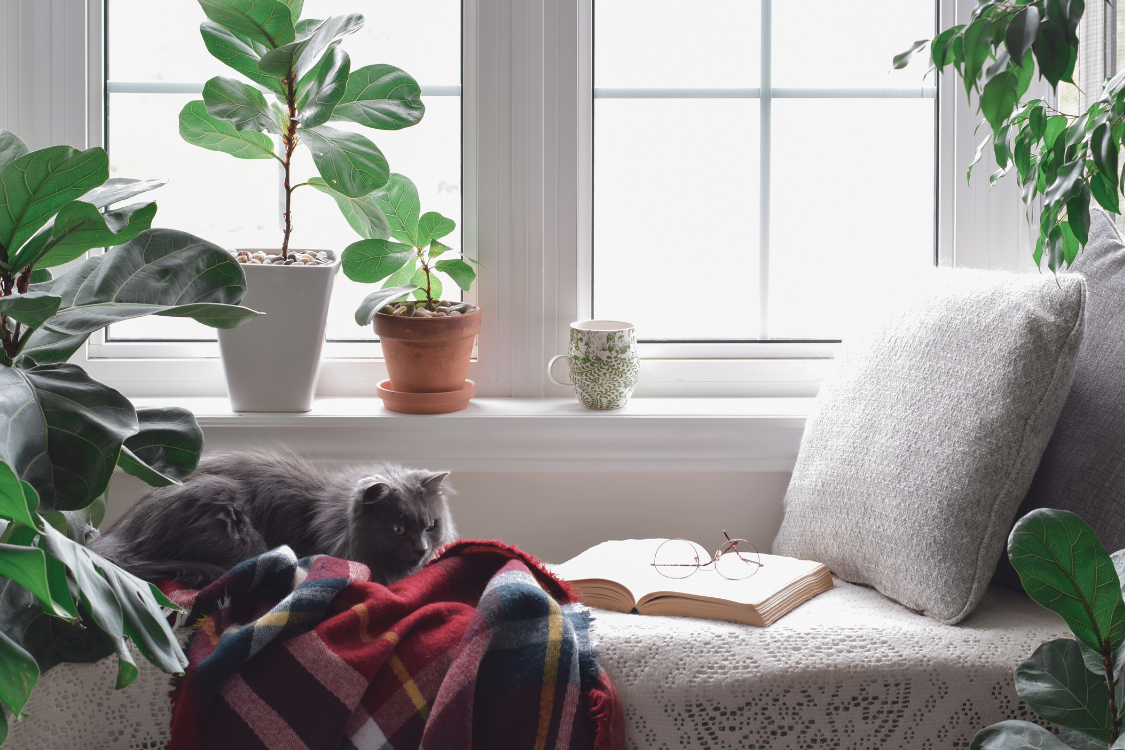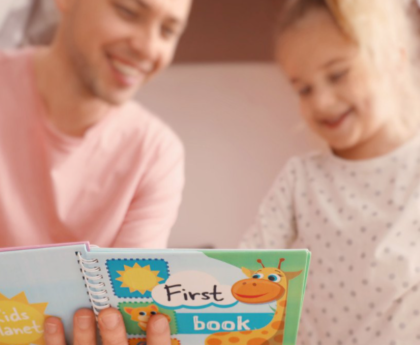No matter how your family approaches reading at home, children develop literacy skills and learn best in a reader-friendly environment. Nurturing your child’s love for reading can positively affect their emotional, cognitive, and mental development.
One way to foster healthy reading habits in your home is to create an inviting, cozy reading nook—also known as a reading area. To learn about how to set one up, here’s what to consider first.
How is a Reading Nook Different from a Home Library?
A home library is a shelf, bookcase, wall space, or entire room dedicated to displaying and organizing your book collection. In comparison, a reading nook is a comfortable, designated space that’s conducive to leisurely reading and becoming immersed in a book.
While a reading area can be located in the same space as a home library, you don’t even need a home library to set up a comfy nook (although the more books you own that you can’t wait to read, the better).
Where is the Best Spot for a Reading Nook?
Some people have entire rooms or areas in their homes dedicated to reading. Others have a small, special chair with quality lighting that can be used for devouring their favorite texts.
Think about how you can personalize your reading corner. The goal is to make it feel welcoming and comfortable, quiet and well-lit with minimal distractions.
Reading nooks can be just about anything you want, in just about any location:
- A comfy chair in the corner of a bedroom
- A special loveseat or bench in the home office
- An outdoor hammock in the backyard
- A small floor cushion and blanket near a sunny window
- A custom, built-in nook in the family room
- A fort-like tent in the kids’ room
- A convertible space in a small studio apartment
When creating a reading nook, your options are nearly endless. All you need is a love of reading, a few good books, and some creativity to get started.
Building a Reading Nook for Kids
If you search “children’s reading nook” on Google or Pinterest, you’ll be bombarded with trendy, elaborate images of wide-open spaces, fluffy throw pillows, ceiling-high bookshelves, and even some funky hanging pod chairs.
While all these things are fun and can be used as fuel to designing your at-home reading area, don’t be fooled! You don’t need a big house, fancy equipment, natural lighting, or even a shelf full of titles to make a nook that works.
Here are the top factors to get right when building your own reading space.
Lighting
First thing first: every reading space needs good lighting.
You have several options here:
- Natural light
- Floor lamps
- Reading lamps
- Book lights
- Adjustable overhead lights
Natural light can only be useful during the day, so you might want to purchase or thrift a table lamp to use at night.
Book lights that clip onto books are great for nighttime reading. They’re bright enough to read the pages but still keep the room dim and relaxing.
Floor lamps are also useful especially if you have a designated chair, floor seat, or resting area. Place these stand-alone lamps where they will illuminate the primary reading space, ideally from overhead and behind the seating area to prevent shadows.
Seating
Where will readers sit in the reading nook? This could be:
- Chairs (make sure they have backrests)
- Beanbags
- Floor cushions
- Loveseats
- Long, comfy couches
Remember to create a seating area that isn’t too rigid. Enable “lounge” posture so readers can sit back, lay down, and sink into their unfolding story.
Book Display
A reading space comes to life when it contains a space to display (and store) all your precious books.
You have many options:
- Built-in wall shelves
- Stand-alone bookshelves
- Wicker baskets
- Cabinets
- Storage cupboards
- Vertical stacks of books organized on the floor (yes, this is totally acceptable!)
When it comes to organization, books are typically arranged in several different ways. You can organize books by difficulty level, genre, interest, alphabetically by author, or even by color.
Another thing to consider for your book display is rotating what books you read. Some people like to have the books on their “To Be Read” list closest to their seating area. Others rotate their books (and their child’s books) to include books they enjoy re-reading, new books, challenging books, and more.
Ambiance
Ambiance is more important to some than it is to others. The good news is, the overall mood and “character” of your reading space is up to you.
Do the readers in your home prefer a bright, fun, colorful space that inspires creative energy? Or do you and your family prefer a calm, serene space that’s clean and clear of distractions?
Personalize the overall ambiance with paint colors, wall decorations, accent features, artwork, rugs, curtains, and other design elements.
Safety
Safety should be an important factor you consider when designing and building a book nook.
- Tall bookshelves are heavy and can easily tip over—risking injury or damage—if they aren’t structured properly.
- Furniture needs to be secured and safe to sit, lay, and climb on (especially if you have little kids).
- The electrical setup for lighting and other technology should be safe, with outlets covered and out of reach of babies or toddlers.
If you need help making your reading area safer or more risk-free, consult with a designer or contractor.
Technology
While the focus of your reading nook should be on reading books, there is plenty of room for technology today. With so many learning apps, reading programs, and digital tools in education, online reading is a helpful option.
For kids learning to read, it’s unlikely they’ll sit down for long periods and focus on actual text. Encourage them to have fun with other reading-friendly options such as the reading.com app, which guides early readers through engaging lessons and games.
Encourage Your Child to Help Set Up a Book Nook
Give your child a sense of autonomy and involvement when setting up your home reading nook! Let them participate in the design process, organize their own books, pick out artwork, and try all the seating and furniture until you get it just right.
Whether you decide on a simple, minimalistic nook (such as a floor cushion and a small book cubby) or build a magical reading space for the whole family, a designated reading space can invite imagination and reading enjoyment.
Reading isn’t all about learning or homework. It’s about exploring new worlds of curiosity, inspiring creativity, and relating to the human experience. When you create a reading space that your child feels at home in, you inspire a love of reading and create memories with your family that you can all cherish for years.
Get more reading tips for your family at Reading.com!





